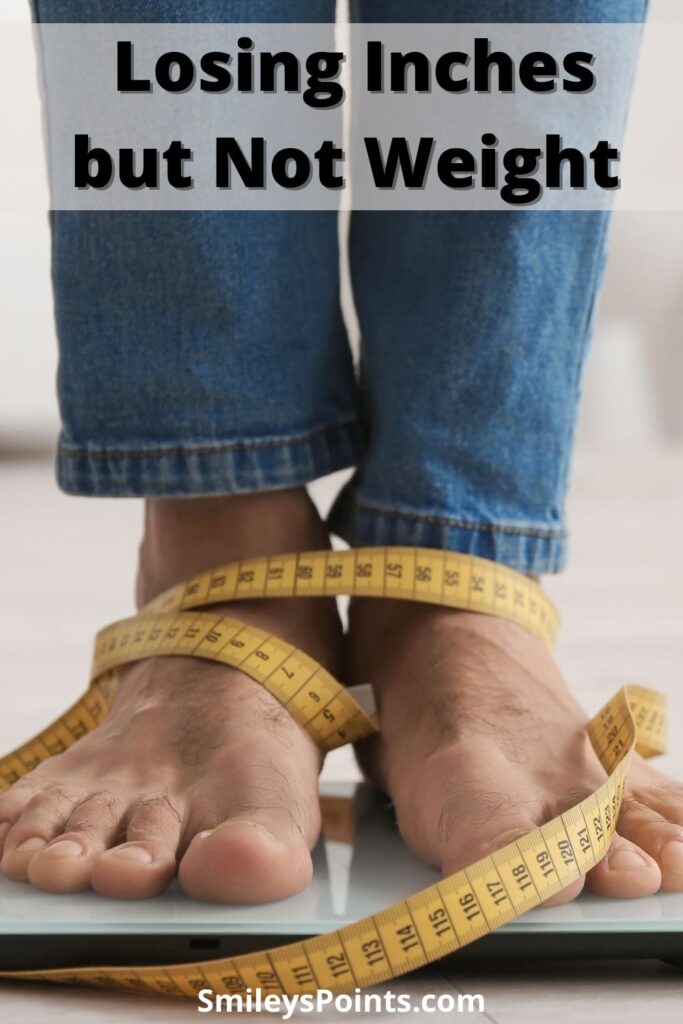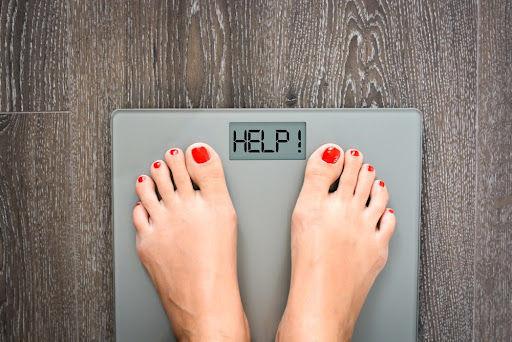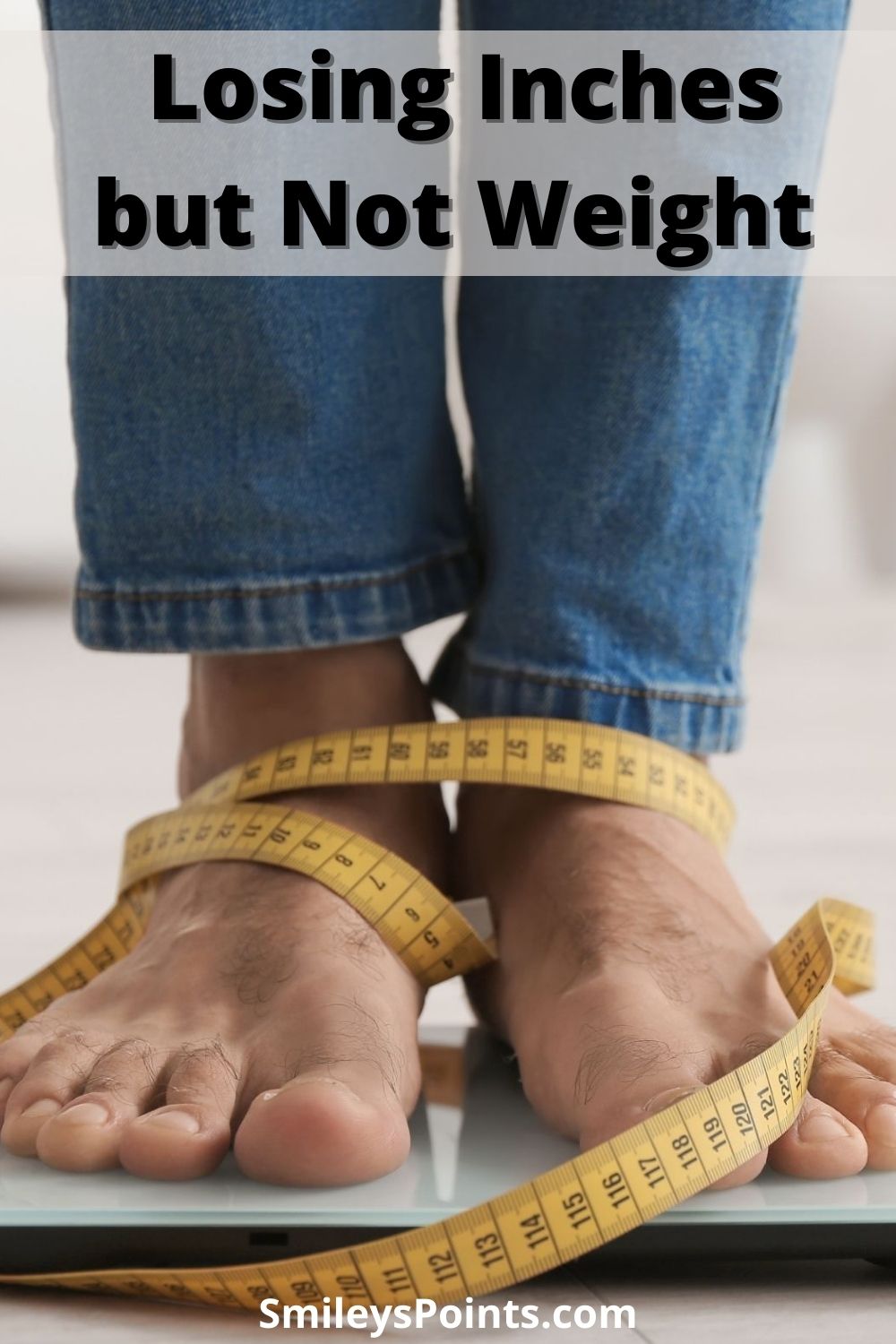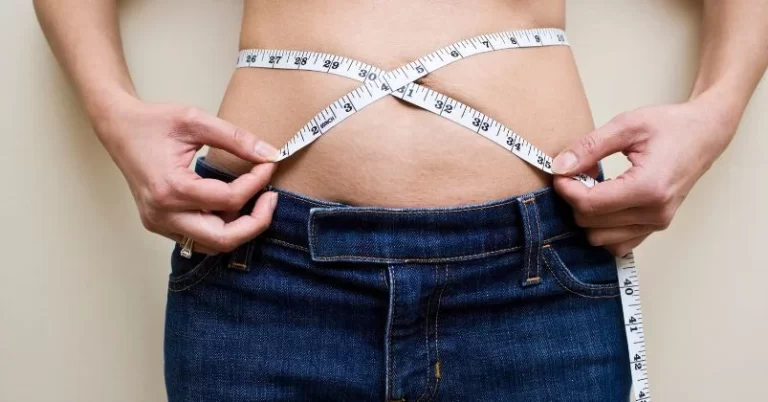Why Am I Losing Inches but Not Weight – What to Do Next

While weighing yourself is a good start to see how you are progressing, it is not everything. There will be days when you notice that you are losing inches but not weight. You will see your pant size go down, but the scale won’t reflect the changes you can physically see in your body, causing you to either be discouraged or leave you wondering what to do next.
Before we address what you can do next in your weight loss journey, we must mention a few truths. Many weight loss programs ask you to weigh yourself every day for a few months, and you will see the scale weight fluctuate. This can be due to retaining water, salt, or fluctuations in hormones. These are just a few examples of how weight can fluctuate.
Variations are common and expected. It doesn’t mean that your weight loss program has failed. It just means that you need the patience to see things through. The weight will come off if you keep moving forward.
How to Successfully Weigh Yourself

Believe it or not, there is a method to successfully weigh yourself. The best time to step on the scale is right after you wake up and go to the bathroom. Refrain from having anything to drink or eat until you weigh yourself for the best results.
Place the scale in the same spot on the floor in the same room for consistency. While it may not be completely accurate, it will allow you to confidently measure your progress because all of the variables are equal.
Most experts recommend you either remove your clothing or subtract the weight of your clothing to determine your weight.
Step on the scale so that your feet are centered. They shouldn’t be too far back or too far forward, as this will skew the results. Look ahead as the scale measures your weight. Then, look down for the measurement.
Do this three times for the most accurate measurement and go with the one in the middle. This will probably be the most accurate reading. Furthermore, if you are placing a scale on the floor, you should wait at least ten minutes for the scale to settle before taking a reading.
The Downward Spiral: A Never-ending Mind Game
Weight loss and measuring your progress are good things. It only becomes bad when we allow our weight to dictate how we feel about ourselves. This is where low self-esteem and eating disorders begin to form. Don’t be discouraged by the numbers, but look for the positive changes in your body.
Here Are the Truths
In knowing the truth, you can figure out what your next step should be. It will help you determine what is normal and areas that may require work.
When most people say they want to lose weight, they mean they want to tackle an area of their body. It is a slimming-down process, but what we don’t realize is that slimming down is not always reflected in the number on the scale going down.
People can become thinner without seeing a change on the scale. This happens when you are losing body fat but gaining muscle in the process. While the weight may remain the same, you will notice you are shedding inches, which is a good sign that you are going in the right direction.
Knowing that this is possible helps you remove the focus from the numbers reflected on the scale and onto the fact that you are losing body fat, altering not only your physical appearance but how you feel about yourself as well.
Scales record weight but cannot determine how much of it is fat, bones, organs, muscle, or water. Being aware of your body’s composition is important if you want to see results. The scale simply won’t reflect this.
Furthermore, scale weight constantly fluctuates. Weight changes up to ten pounds can occur in one day, depending on what you eat, how often you drink/eat, use the bathroom, or if you are retaining water.
Yet before you ditch the scale, studies have concluded that regularly weighing yourself is a good thing. It helps people maintain weight loss because they know about any small gains immediately and can refocus before gaining more weight. It is much easier to lose five pounds than twenty. Regular weight check intervals can help sustain weight loss.
Keep Your Focus on Losing Fat, Not Weight
The scale is a useful tool but won’t give you the whole picture. When you shed body fat, you make permanent changes to your body. It shifts the body composition so people have more muscle and less fat. They become leaner.
Weight loss on the scale can reflect water loss or muscle loss. Both are possible. It is difficult to know whether the results are real or the result of a change in habits, varying hydration levels, or shifts in hormones.
The Reality of the Scale
Weighing yourself on a scale can generate misleading results.
- Scales don’t reflect bodily changes. Strength training and cardio exercises build lean muscle while losing fat. The scale may not show the weight loss because the weight in building muscle equals it out. You will notice muscle, but the scale won’t budge.
- Scales measure overall body weight. The weight on a scale reflects fat, muscle, bone, food, water weight, and organs. It doesn’t measure just one aspect like fat loss. Therefore, the number on your scale can be deceptive.
- Scales may not reflect your actual health. A scale can’t discern between muscle mass and fat. Someone can have a low body weight but a high body fat percentage.
- Scales are lousy at motivation. If you weigh yourself and are unhappy with the results, most people feel like they have failed. They wonder what went wrong, and it can be discouraging – especially if you have a long weight loss plateau. Focusing solely on weight overshadows the positive body results that are happening.
Change How You View Losing Inches But Not Weight
Consider the following before becoming too discouraged. They will change how you view yourself and help you to accurately gauge results.
- Notice the way your clothes look and fit. If they are loose, you are successful.
- Find a scale that measures body fat by using bioelectrical impedance.
- Take measurements. Measure your body at different points to see if you are losing inches. Knowing this will motivate you to continue. Lost inches mean what you're doing is working.
- Create performance goals. Instead of focusing on a fat loss or weight loss goal, shift to completing a set number of workouts weekly or going in a competition. These are attainable goals that will make you feel more positive and provide more instant gratification.
Programs like Noom and iTrackBites/Healthi are great at helping you track exercise, food intake, and the number of calories you burn. By being encouraged to take measurements along with adopting a healthy mindset, you will feel more empowered along your journey. They are the best ways to measure success when following a weight loss program and create a sustainable lifestyle change.








